Legend has it that the White House earned its name after white paint was applied to its façade in hopes of covering any burn marks left by the British blaze of 1814. In reality, the building was painted white in 1798 using lime-based whitewash, a protective coat meant to keep the porous stone structure from freezing. The whitewash was regularly refreshed until 1818, when it was replaced with white lead paint. The nickname was made official by President Theodore Roosevelt in 1901.
Face lifts and name changes haven’t been the only improvements made to the White House since construction began in 1792. Here are the nine best upgrades made to the President’s Palace.
1. Running Water
Engineer Robert Leckie designed and constructed a system of reservoirs, pipes, and pumps that brought running water to the White House in 1833. Leckie’s system was originally intended to bring drinkable water to the house, and filled reservoirs acted as fire hydrants for protection against fire. However, running water soon served a new function: supplying water to the East Wing bathing room installed by President Andrew Jackson. At the time of its addition, President Jackson’s bathing room only had showers, cold baths, and hot baths, heated by coal fires burning under copper boilers. The first flushable toilet wasn’t introduced until 1853.
Before running water reached the White House, President Thomas Jefferson installed a cistern in the attic and, through wooden pipes, distributed clean water to the house’s two water closets. The White House didn’t have central plumbing until 1853. This new system only served the second floor and included both hot and cold water taps. A 2,000-gallon tank, installed in the attic in 1876, supplied water throughout the house. This was a massive upgrade from President John Quincy Adams’s presidency, during which water had to be brought to the White House from the Treasury Building. Here, water was extracted from a well using an iron garden pump.
2. HVAC
The White House gained a new comfort in 1840 with the introduction of central heating. The gravity hot-air system consisted of a self-contained furnace, inside of which rested an iron firebox. The White House’s first heating system could only reach the state rooms and Cross Hall on the main floor. Later, President James K. Polk added another furnace and additional air ducts to extend this comfort into bedrooms and offices.
Before President James A. Garfield suffered from the gunshot wound that would eventually take his life, air conditioning wasn’t seen as a necessity in the White House. Previous presidents would forego Washington’s stifling summer, retreating to cooler spots in the mountains. However, President Garfield didn’t have a choice to retreat, and a rudimentary A/C unit was brought in to comfort the president. Other elementary, and failed, air conditioning systems were installed under President William Howard Taft and President Calvin Coolidge. It was ultimately President Theodore Roosevelt who extended a more modern system to the house’s private suites.
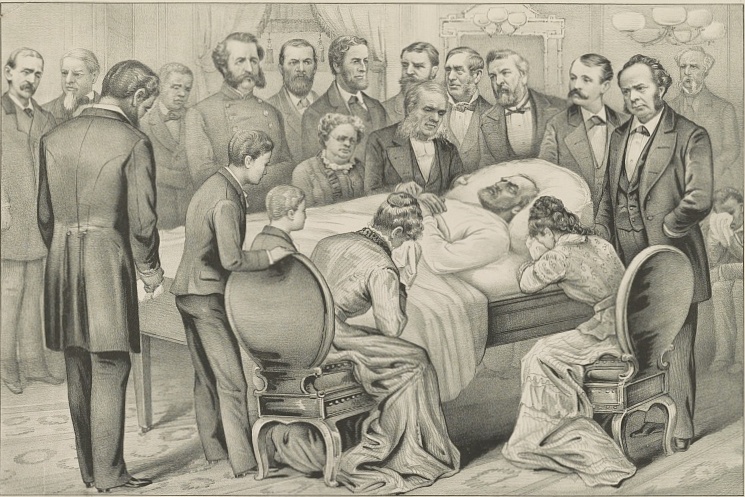
3. Telephones
Access to a phone in the late 1800s was rare, and its use was limited. Yet the White House received its first telephone in 1877 – one year after Alexander Graham Bell patented his telephone. Its number was simply “1.” Originally located in the telegraph room, President Rutherford B. Hayes was the first president to use the phone, although his call wasn’t very interesting. At the time, only two phones in Washington were connected to the telephone wire: one at the White House, the other at the Treasury Department. Despite this limitation, President Hayes was reportedly amazed by the instrument’s function. The telephone didn’t reach the Oval Office until 1929, where it was enjoyed by President Herbert Hoover.
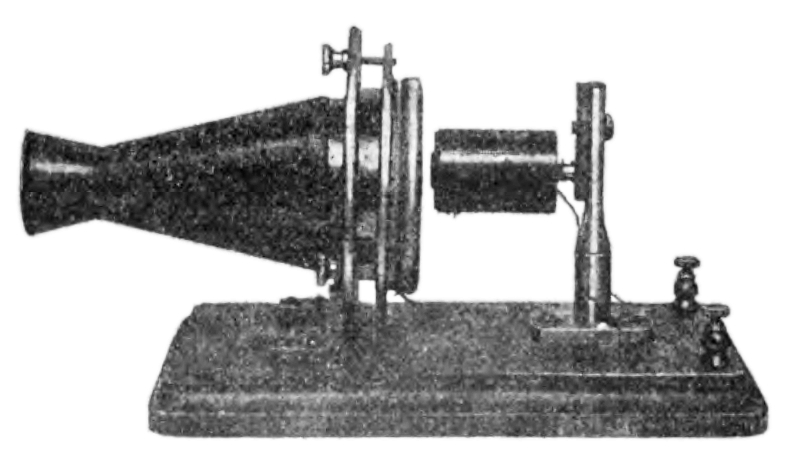
4. Electricity
Surprisingly enough, electricity didn’t power the White House’s first telephone. In fact, electricity wasn’t installed until over a decade later in 1891. President Benjamin Harrison and his wife were the first consumers of this luxury, but they feared electrocution and refused to touch the light switches. Unlike the Harrisons, later presidents used electricity to bring other improvements to the White House. President Calvin Coolidge introduced the first electric refrigerator to the White House kitchen and the Roosevelts brought the first fully functioning A/C units.
The White House electrical system has undergone a series of upgrades throughout the years. 1948 marked the commencement of a massive electrical and structural renovation of the Executive Mansion under President Harry S. Truman. President Lyndon B. Johnson and President Jimmy Carter were financially and environmentally conscious regarding the White House’s electricity use. Johnson insisted on turning off all lights in unused rooms; Carter installed the White House’s first solar panels to heat the mansion’s water supply in 1979. Although the panels were taken down under President Ronald Reagan, President George W. Bush installed the first solar electric system in 2003, a project completed by the Obama Administration in 2014.
5. Radio
The first radio receiver to be introduced to the White House was installed under President Warren Harding, on February 8, 1922. A few months after the Westinghouse Electric corporation’s KDKA AM station hit the radio waves in November 1920, the vitality of this new communication platform was obvious. Besides entertaining the average American, radio proved its usefulness in military and business operations. This new form of communication allowed President Harding to address the American public live and on-air during the benediction of Francis Scott Key, writer of “The Star Spangled Banner.”
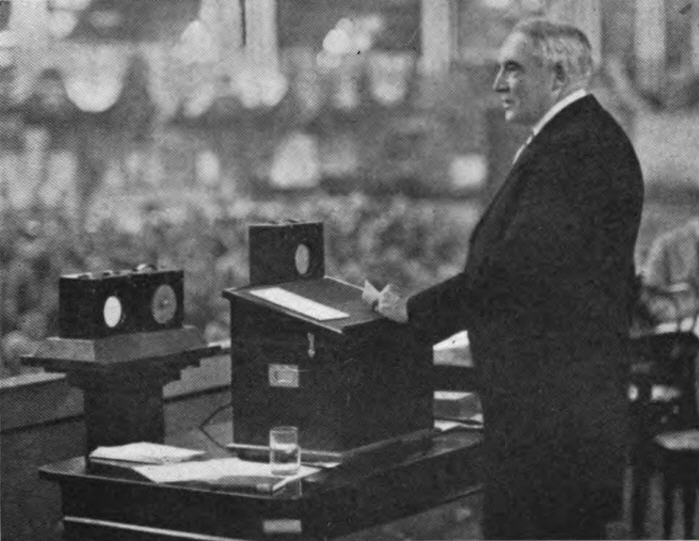
As the first president to address the nation live on radio, it is clear that President Harding avidly supported and indulged in the medium. One of his first actions in office assembled the “radio conference,” which brought radio amateurs and broadcasters together with government regulatory officials to shape and discuss broadcast standards. A follow-up conference in 1923 led to the formation of a government agency meant to regulate radio transmissions, hoping to maximize the radio’s contributions to the “public good.” Harding and his introduction of the radio to the White House shaped radio standards and carried the new medium into its golden age.
6. Swimming Pool
The six levels that compose the White House hold 132 rooms, 35 bathrooms, 28 fireplaces, eight staircases, three elevators – oh, and a pool. The long, rectangular indoor pool opened in 1933, during President Franklin D. Roosevelt’s administration. Built inside the west terrace, which extends between the White House and the West Wing, the pool was donated to the president after the New York Daily News raised money for its construction. Suffering from polio and its paralyzing effects, FDR used swimming and aqua therapy as a means of relieving the pain.
FDR’s pool was covered up under President Richard M. Nixon’s administration in 1970. The press briefing room stands above the old pool, which was sacrificed to accommodate the growing demands of television coverage. Despite the its inaccessibility, however, Nixon ensured that no damage was done to the pool. The White House grounds remained without a pool for five years, until President Gerald R. Ford order the installation of a new, outdoor pool in 1975 to satiate his swimming habits.
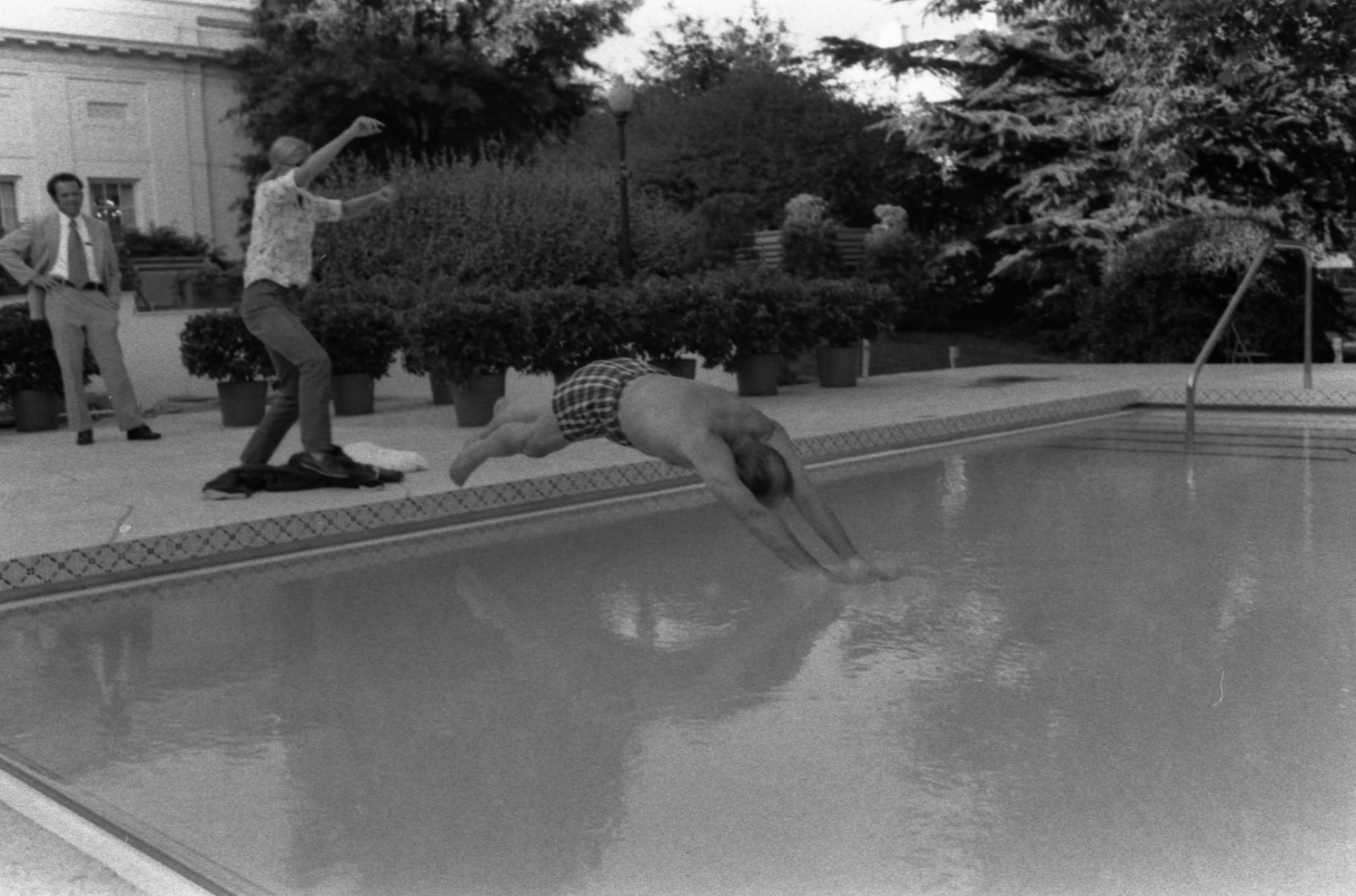
7. Bunker
Whether it’s part of the White House’s massive room count or not, an underground bunker rests underneath the East Wing. Constructed during World War II in 1942, the bunker was formally known as the Presidential Emergency Operations Center (PEOC). Intended to protect President Roosevelt from German artillery and foreign threat, it was considered an absolute necessity. FDR’s successor, President Harry Truman, expanded the bunker and turned it into the bomb shelter that is today.
PEOC is mostly famously known for protecting President George W. Bush, his family, and administration during the attack on September 11, 2001. The attack prompted the construction of a second, more advanced bunker. Plans to build the new bunker beneath the White House’s North Lawn broke in 2010, under President Barack Obama’s administration. Although the project is shrouded in secrecy, it is known that the new bunker is at least 1,000 feet below the surface of the earth, consisting of five stories packed with food and a self-contained air supply; it’s sealed to prevent radiation contamination. The construction of underground tunnels and passageways would allow the First Family to escape the White House and its grounds completely.
8. Decor
In 1961, when the Kennedys moved into their new home, a lot of things changed at the White House. Smoking was allowed in the state rooms, cocktails were served to guests, and receiving lines for entry were abolished. The young couple wanted to do away with the formalities and introduce casualness and comfortability into the Executive House. Yet, rules and regulations were not the only things the Kennedy’s wished to change.
First Lady Jacqueline Kennedy spent her short stay in the White House coordinating and planning a massive redecoration of the bland rooms and walls. Her aim was to highlight art, culture, and history. Enlisting the help of Sister Parish, an interior decorator, and Henry Francis du Pont, an American horticulturist, the Fine Arts Committee was formed with du Pont as the acting chairman. Du Pont was an invaluable resource to the Kennedys and the committee. Known as the greatest collector of Americana and for his status as the most qualified authority in American historical decorations, du Pont assured the quality and validity of the artifacts, while Parish ensured their proper placement.
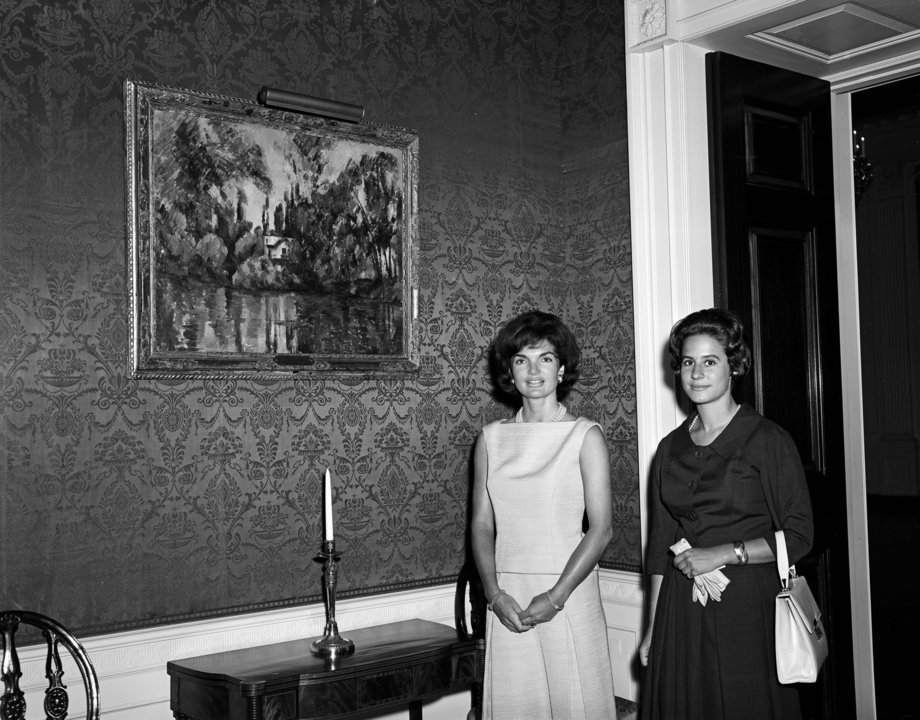
Using Life magazine and a televised tour of the White House that aired on CBS, Kennedy promoted her restoration in hopes of finding donors. The successful promotion tactics worked, and thousands of donations streamed in from across the nation. Before their abrupt move from the White House following President John F. Kennedy’s assassination, the First Lady and her trusted committee were able to sort through donations and decorate the majority of the state rooms located on the ground and first floors. This hefty restoration marked the Kennedys as cultural gurus and remained untouched throughout Lyndon B. Johnson’s presidency.
The Kennedys didn’t keep their restoration inside. Following a state trip to France, with subsequent stops in England and Austria, President Kennedy was determined to have a garden on the White House property as luscious and majestic as those of Europe. Under the direction of Rachel Lambert Mellon, the garden began to grow in the spring of 1962. President Kennedy was greatly invested in the project and concerned himself with the wellbeing of the garden, always stopping to ask Mellon, “How is the garden doing?” Although planning the rose garden began with President George Washington, with the help of Mellon, JFK’s upgrade made the garden what it is today – an internationally known, living masterpiece.
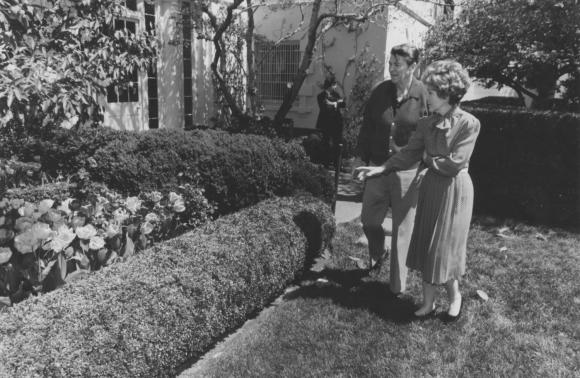
9. Computers
The Hewlett Packard 3000 made history as the first computer model introduced to the White House. Under an initiative formed by President Jimmy Carter and his administration, the computer was meant to automate the White House. Used to assemble databases, compile the concerns of Congress, develop a press release system, and track correspondences, the computer’s use was limited to senior and mid-level staff. President Carter also acquired the first laser printer and water-cooled IBM model before the end of his term.
As the computer rapidly evolved, the White House successfully kept up with new technologies and features. President Ronald Reagan and staff expanded upon President Carter’s initiative, introducing the personal computer and adopting the word processor in the 1980s. The internet was introduced in 1992 and was first used by President George H.W. Bush, and the first White House website was launched under President Bill Clinton. This new online presence was seen as a “Gateway to Government.” Although internet access at the White House was limited under the Obama administration to First Family use only, President Barack Obama ensured White House staff had updated phones and computers before taking leave of office in 2016.
The White House has been in constant restoration, seemingly since its official opening in 1800. Fires and structural weaknesses required more traditional renovations. Other improvements were made to suit presidents’ needs, such as President William Howard Taft’s (in)famous bathtub; some additions were meant to make the daunting structure feel more like a home, such as FDR’s White House Family Theatre. Regardless of the motivation, as trends shift and new ideas are introduced in America, the White House has been a reflection of our ever-evolving culture.
Featured image: The White House in 1807 (Library of Congress)
Become a Saturday Evening Post member and enjoy unlimited access. Subscribe now
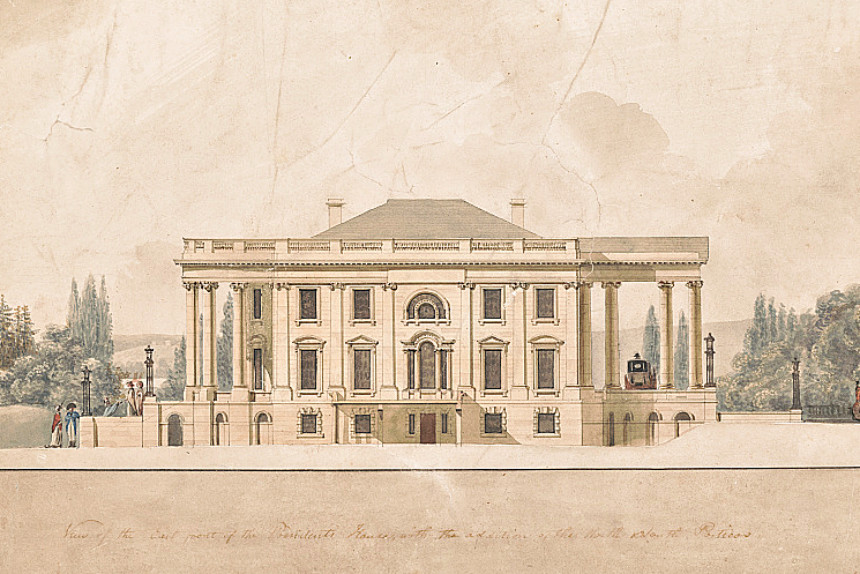



Comments
I was in Jnr. High/High School in the 70s and I remember “Doonsbury” depicting the White House Press Corps meeting in the pool! LOL!
These are all very interesting upgrades made to the White House. I’m curious about what type of technology Teddy Roosevelt used in modernizing the heating and cooling at the turn of the 20th century. No telephone in the Oval Office until as late as 1929 surprised me.
I’m sorry President Nixon had to cover the FDR pool, but can understand his reasoning. Fortunately Gerald Ford had that new outdoor one installed in 1975. He probably used it more during his shorter time there than all the Presidents that followed combined. One more reason to like President Ford. I love swimming and being in the pool, too. I don’t see a diving board though, and wonder how deep the deep end is.
I never knew the extent of how big the White House garden was, or how much was done and the involvement by JFK himself. Historically it seems Jackie was/is given all the credit on the decor inside and out, and that isn’t accurate per this feature. Both were inspired by their stops to France, England and Austria to bring that beauty to the U.S. and they really did a wonderful job.